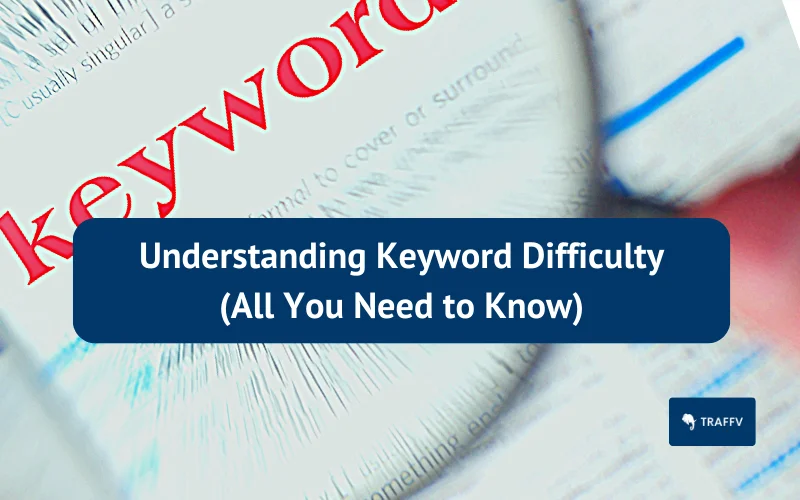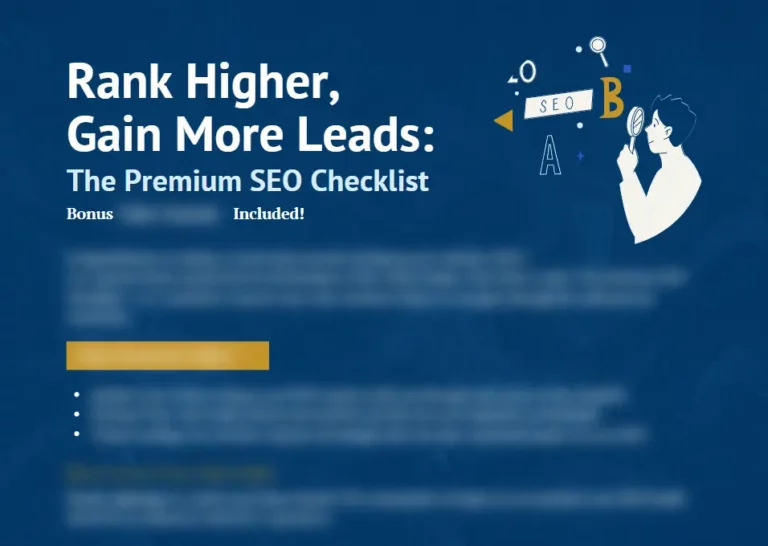In the ever-evolving landscape of search engine optimization (SEO), understanding keyword difficulty is crucial to formulating a successful SEO strategy and allocating resources effectively.
In this comprehensive guide, we will delve into the concept of keyword difficulty, its importance, and the factors that influence it.
We will also introduce popular tools for measuring keyword difficulty and discuss strategies for targeting keywords with varying levels of difficulty.
By the end of this guide, you will have a solid grasp on keyword difficulty and how to optimize your website for better search engine rankings.
TL:DR
- Keyword difficulty is a metric used to measure the level of competition and effort needed to rank for a specific keyword.
- Popular tools such as Ahrefs, Semrush, and Moz provide keyword difficulty scores which can be interpreted in order to optimize SEO strategies.
- Strategies for targeting keywords with varying difficulties include focusing on long tail keywords, enhancing content quality & building domain authority, and earning high quality backlinks.
What Is Keyword Difficulty?
Keyword difficulty is a metric used to estimate the level of competition and effort required to rank for a specific keyword in search engine results.
This keyword difficulty metric is vital for determining which keywords are worth targeting and which ones may be too competitive.
To check keyword difficulty, a keyword difficulty checker can help you determine this metric.
It’s important to differentiate between keyword difficulty and keyword competition.
Keyword difficulty measures the difficulty of ranking for a particular search query in organic search results.
On the other hand, keyword competition relates to the popularity of a search query in paid search.
Various keyword research tools, such as Ahrefs, Semrush, and Moz, provide keyword difficulty scores to help you assess the competitiveness of a keyword.
These tools use different methodologies and scoring systems, which may cause variations in the scores.
It’s crucial to compare keyword difficulty scores within one tool, as combining data from multiple tools can lead to inaccurate comparisons.
Why Is Keyword Difficulty Important
Understanding keyword difficulty is essential, as it provides an estimate of the level of competition and effort needed to rank for a particular keyword in search engine results.
By knowing the keyword difficulty, you can:
- Allocate your resources more effectively
- Target the right keywords for your website
- Achieve better search engine rankings
- Drive more traffic
- Increase conversions
Various factors influence keyword difficulty, such as content quality, domain authority, and backlinks.
The keyword research process involves assessing these factors to determine the competitiveness of a keyword.
Tools like Ahrefs, Semrush, and Moz are effective for gauging keyword difficulty and can provide valuable insights into the ranking potential of a keyword.
Factors Influencing Keyword Difficulty
Several factors influence keyword difficulty, including:
- Competitors
- Website authority
- Content quality
- Search intent
Large brands tend to have an advantage over smaller brands due to their higher domain and page authority.
Domain authority is a metric developed by SEO software companies to evaluate the amount of link equity a domain possesses.
Page authority, on the other hand, measures the amount of link equity a page possesses.
A strong link profile is crucial for ranking in search engine results.
Assessing link profiles can help you gauge the competitiveness of a keyword and recognize any black hat SEO practices employed by competitors.
The Semrush Authority Score and other SEO tools can be used to objectively assess the overall quality of a domain and its link profile.
Measuring Keyword Difficulty: Popular Tools
A variety of popular tools can help you measure keyword difficulty, each with its unique methods and scoring systems.
Ahrefs. Semrush, and Moz are three widely-used tools that provide keyword difficulty scores for evaluating the competitiveness of a keyword.
It’s important to compare keyword difficulty scores within one tool to ensure accurate comparisons, as each tool has a distinct approach and calculation method.
Ahrefs
Ahrefs is a well-known keyword research tool that calculates keyword difficulty using a score ranging from 1 to 100.
This score is determined based on the number of backlinks and the number of referring domains pointing to the top 10 pages that are ranking for the keyword.
A high keyword difficulty score implies that it will be challenging to rank for the keyword, while a low keyword difficulty score suggests that it will be easier to rank for the keyword.
Semrush
Semrush is another popular SEO and keyword research tool that offers a unique approach to measuring keyword difficulty.
It calculates keyword difficulty using a percentage score ranging from 0 to 100, based on SERP analysis, keyword analysis, and a score weighting depending on locality.
The Keyword Difficulty Score metric in Semrush provides an estimate of the difficulty of ranking for a given keyword, helping you make informed decisions about which keywords to target.
Moz
Moz is a software company that offers a range of SEO tools, including its own method for measuring keyword difficulty.
Moz’s approach is based on the number and authority of relevant backlinks associated with a website, as well as the quality of the content on the website.
Their MozBar browser extension provides Domain Authority metrics on the Search Engine Results Page (SERP) overlay, while their Keyword Explorer offers an immediate score that is easily identifiable and interpretable.
Interpreting Keyword Difficulty Scores
Interpreting keyword difficulty scores involves understanding the difference between high and low difficulty and determining the ideal difficulty level for your website.
High difficulty keywords are characterized by a higher degree of competition and a higher quality of the top-ranking pages, while low difficulty keywords have less competition and a lower quality of the top-ranking pages.
By understanding the keyword difficulty scores and adjusting your SEO strategy accordingly, you can increase your chances of ranking for the right keywords and driving more traffic to your website.
High vs. Low Keyword Difficulty
High keyword difficulty implies that it is more challenging to attain a high ranking for a particular keyword, while low keyword difficulty suggests that it is simpler to attain a high ranking for a particular keyword.
For example, the keyword “iphone 14” in the US has a competition score of 67%, indicating high difficulty; on the other hand, the keyword “how to turn off iphone 14” has a competition level of 33%, indicating low difficulty.
Understanding the difference between high and low keyword difficulty is crucial for crafting an effective SEO strategy.
By targeting keywords with varying difficulty levels, you can optimize your website for better search engine rankings and drive more traffic.
Good Keyword Difficulty for Your Website
Determining the appropriate keyword difficulty level for your website depends on your website’s goals and resources.
If your website has limited resources, focusing on low difficulty keywords might be a better approach.
However, if your website has more resources, you may choose to target keywords with medium or higher difficulty.
Strategies for targeting keywords with varying difficulty include:
- Focusing on long-tail keywords
- Balancing high and low difficulty keywords
- Improving content quality
- Increasing domain authority
- Gaining high-quality backlinks
By implementing these strategies, you can improve your chances of ranking for competitive keywords and drive more traffic to your website.
Strategies for Targeting Keywords with Varying Difficulty
When it comes to targeting keywords with varying difficulty, it’s essential to focus on a mix of keywords with various difficulty ranges, such as long-tail keywords with lower difficulty.
Additionally, it’s important to analyze the ranking factors and calculate the keyword difficulty score in order to adjust the keyword targeting appropriately.
In the following sections, we’ll dive deeper into the strategies of focusing on long-tail keywords and balancing high and low difficulty keywords.
Focusing on Long-Tail Keywords
Long-tail keywords are more specific, less competitive, and provide greater detail compared to shorter, more generic keywords.
These keywords are important in SEO strategy, as they can help you target less competitive niches and drive more targeted traffic to your website.
The advantages of utilizing long-tail keywords include lower competition and a higher likelihood of attracting users who are searching for specific information or products.
By optimizing your content for multiple long-tail keywords, you can generate more web traffic than by targeting a single, popular short-tail keyword.
Balancing High and Low Difficulty Keywords
Incorporating a mix of high and low difficulty keywords in your SEO strategy is crucial for optimizing your website’s visibility and generating more traffic.
Here are some steps to help you identify potential keywords:
- Brainstorm topics related to your business or website.
- Assess the relevance of these topics to your target audience.
- Use keyword research tools to identify potential keywords that may have been overlooked.
By following these steps, you can improve your SEO strategy and increase your website’s visibility.
Keyword research tools, such as Ahrefs, Semrush, and Moz, can help you expand your keyword ideas by generating related keywords and phrases that are associated with the topics initially brainstormed.
By utilizing these tools, you can identify low difficulty keywords with moderately high search volume, which can improve your chances of ranking and driving traffic to your website through search engines.
Improving Your Chances of Ranking for Competitive Keywords
To improve your chances of ranking for competitive keywords, it’s essential to enhance content quality, build domain authority, and earn high-quality backlinks.
In the following sections, we will discuss each of these strategies in more detail and provide tips on how to implement them effectively.
Enhancing Content Quality
Content quality is defined as the overall value and relevance of the information presented in a piece of content.
High-quality content should be reader-focused, informative, well-written, and trustworthy.
To improve your content quality, it’s essential to create content that is in-depth, engaging, and aligns with the user’s search intent.
By focusing on improving content quality, you can:
- Better align your content with search intent
- Increase the likelihood of ranking for competitive keywords
- Achieve higher search engine rankings
- Gain increased visibility
- Drive more website traffic.
Building Domain Authority
Domain Authority (DA) is a search engine ranking score developed by Moz that predicts the likelihood of a website appearing in search engine result pages (SERPs).
It is primarily influenced by the number and authority of relevant backlinks to a website, as well as the quality of the content on the website.
Building domain authority is an essential aspect of improving your chances of ranking for competitive keywords.
Strategies for building domain authority include acquiring high-quality backlinks, creating valuable content, and optimizing on-page SEO factors.
By increasing your domain authority, you can improve your keyword rankings and drive more traffic to your website.
Earning High-Quality Backlinks
High-quality backlinks are natural, reputable, and relevant, and are editorially placed within the content of a high-quality website.
These backlinks are essential for improving search engine rankings and are assessed based on factors such as anchor text relevance, linking page and domain quality and relevance, IP address, and link location.
To acquire high-quality backlinks, it’s essential to:
- Create high-quality content that other websites would want to link to
- Engage in guest blogging
- Collaborate with influencers
- Develop relationships with other websites
By earning high-quality backlinks, you can improve your website rankings and increase the likelihood of ranking for competitive keywords.
Keyword Difficulty and Search Intent
Keyword difficulty and search intent are closely related, as optimizing content to align with user intent can increase the likelihood of ranking for competitive keywords.
In the following sections, we will discuss how to identify user intent behind keywords and how to align your content with search intent.
Identifying User Intent Behind Keywords
User intent is the purpose behind a user’s search query and can be divided into four categories: informational, commercial, navigational, and transactional.
Understanding the user intent associated with keywords can help you create content that better aligns with the user’s requirements and ultimately improve your chances of ranking for competitive keywords.
For example, an informational keyword such as “coat vs jacket” can generate top-of-funnel traffic, giving users the opportunity to become prospects and interact with a lead form or explore product pages.
By targeting keywords with different types of user intent, you can optimize your website for better search engine rankings and drive more traffic.
Aligning Content with Search Intent
Aligning content with search intent is crucial for improving keyword rankings and driving more traffic to your website.
To ensure your content is aligned with search intent, it’s essential to understand the user’s requirements and create content that meets those requirements.
This involves researching keywords and phrases that your target audience uses to search for the topic.
By creating content that aligns with search intent, you can:
- Increase the likelihood of ranking for competitive keywords
- Drive more traffic to your website
- Improve search engine rankings
- Increase visibility
- Enhance overall website performance.
Navigate SEO Success by Understanding Keyword Difficulty
Understanding keyword difficulty is crucial for creating a successful SEO strategy and optimizing your website for better search engine rankings.
By using popular tools such as Ahrefs, Semrush, and Moz, you can measure keyword difficulty and develop effective strategies for targeting keywords with varying levels of difficulty.
Collaborating with a Search Engine Optimization company can provide valuable industry expertise and guidance, ensuring the continued success of your online presence.
Frequently Asked Questions
What is keyword difficulty?
Keyword difficulty (KD) is an SEO metric that measures the effort required to rank on the first page of Google for a specific keyword.
It is based on factors such as domain authority, page authority, referring domains, and content quality, and is measured on a scale from 0 to 100, with higher numbers being more difficult to rank for.
What is a good keyword difficulty?
A good keyword difficulty lies between 30%-70%.
These keywords have a decent search volume but are not too competitive, making them ideal for achieving successful ranking in organic search results.
By targeting keywords with this difficulty range, you can ensure that your website is visible in organic search results and that you are able to drive traffic.
Is higher keyword difficulty better?
Higher keyword difficulty is not necessarily better, as a high-difficulty keyword is usually highly competitive and may require more effort to rank highly.
What is the difference between keyword difficulty and keyword competition?
Keyword difficulty measures how difficult it is to rank organically for a keyword, while keyword competition relates to the level of competition in paid search for that same keyword.
What are the main factors that influence keyword difficulty?
Keyword difficulty is influenced by several factors, such as the level of competition, website authority, quality of content, and the user’s search intent.




